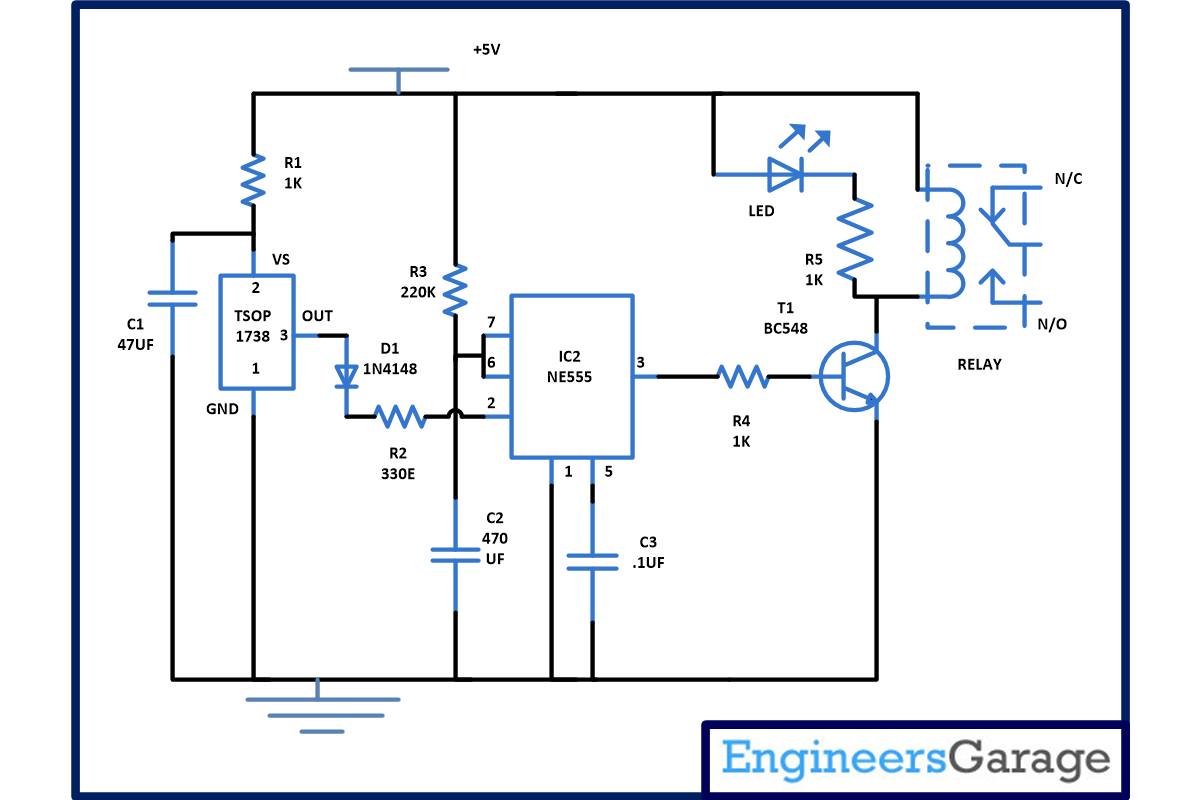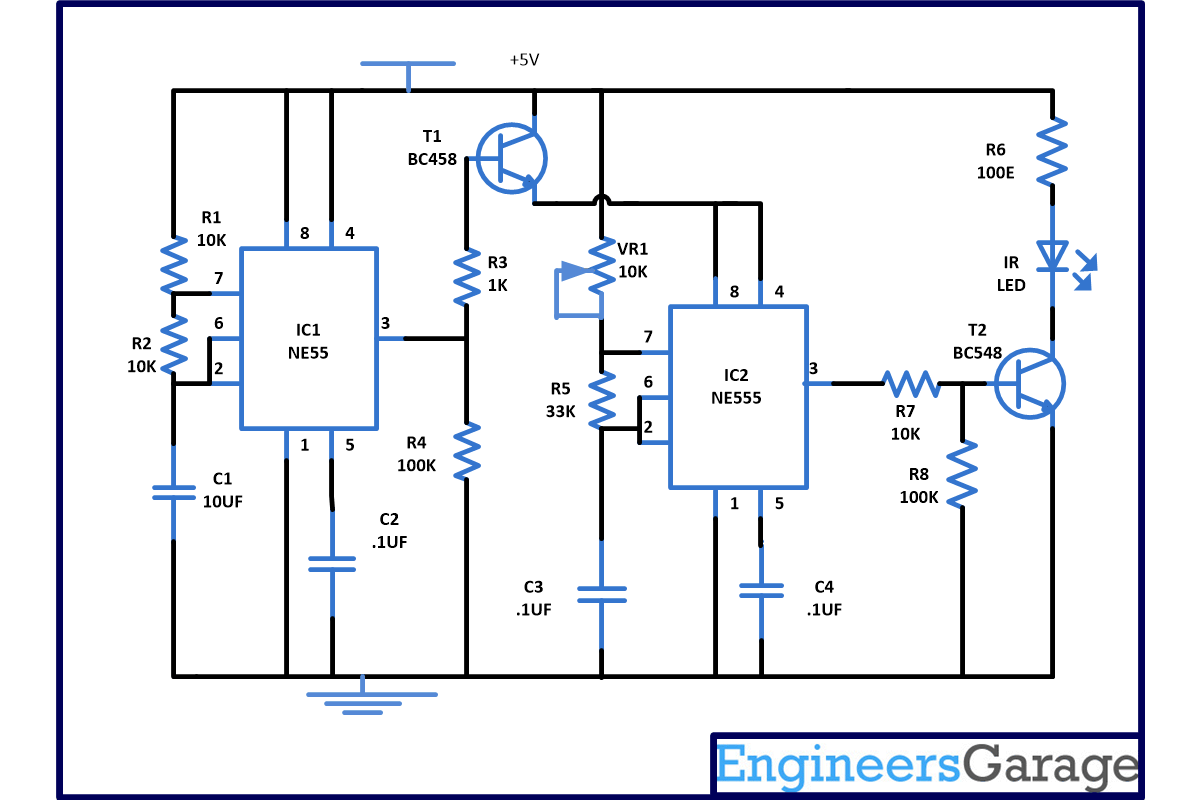Many times it happens in restaurants, malls and specifically at home while brushing teeth we forget to switch off the tap which leads to wastage of water. The circuit described here will automatically switch on the tap water when you put your hand below the tap outlet and off the same after some time. This will lead to less wastage of water.
The circuit is build around commonly known NE555 timer IC. The circuit comprises of two sections, one is transmitter section and another is receiver section. Transmitter section is built around IC1, IC2 and IR LED with few more components. Here IC1 works as a-stable multi-vibrator producing output pulse of approx 5Hz which will trigger the IC2. IC2 is also configured in a-stable mode and it will produce the 38KHz output. You have to adjust the frequency with the help of variable resistor VR1 to approx. 38KHz or you can use oscilloscope to set 38KHz and this output is feed to IR LED with help of transistor T2.
Receiver section is build around IR sensor TSOP1738 which works on 38KHz frequency, switching diode, timer IC NE555, relay, transistor to drive relay and few more components. Here 555 timer woks on mono-stable mode.
IR sensor TSOP1738 is sensitive to IR radiation modulated to 38KHz. Its output is normally high which momentarily goes low when there is any obstruction between IR LED and TSOP1738. This will trigger the IC2 of receiver section and energize the relay for the specific period of time. When relay is energized it will drive the solenoid which lifts the valve fitted in the pipe to let the water flow out of the tap which switches on the wash basin tap for specific time period.Time period for which you want to on the wash basin tap is controlled by resistor R3 and capacitor C2. And time period can be calculated by the formula (T= 1.1*R3*C2) in seconds. Be care for the alignment of IR LED and TSOP1738. They must be placed opposite to each other such that IR rays transmitted by IR LED directly fall on IR sensor TSOP1738.
Circuit Diagrams
| Circuit-Diagram-Automatic-Wash-Basin-Tap-Controller |  |
| Circuit-Diagram-Automatic-Wash-Basin-Tap-Controller_0 |  |
Project Components
Project Video
Filed Under: Electronic Projects
Filed Under: Electronic Projects


Questions related to this article?
👉Ask and discuss on EDAboard.com and Electro-Tech-Online.com forums.
Tell Us What You Think!!
You must be logged in to post a comment.